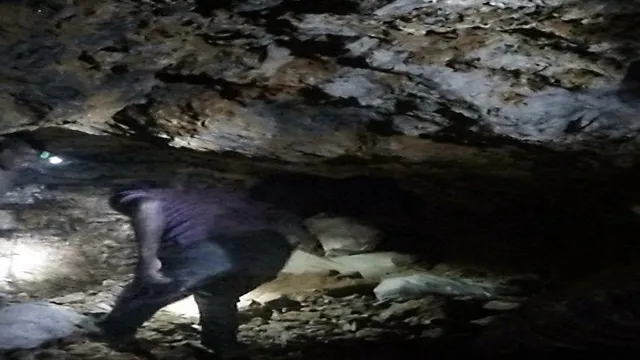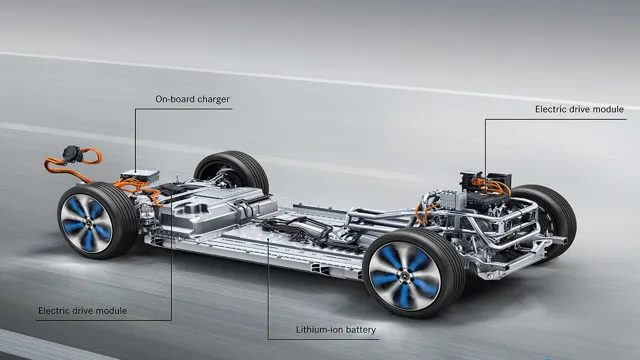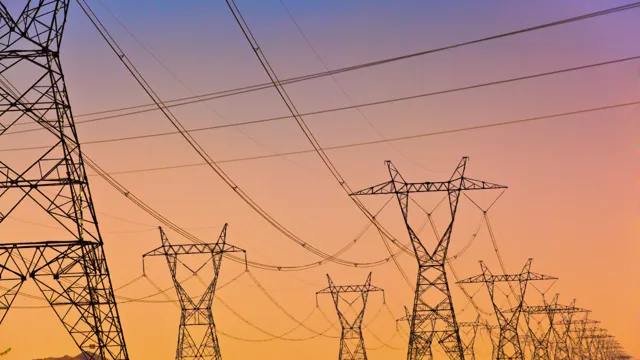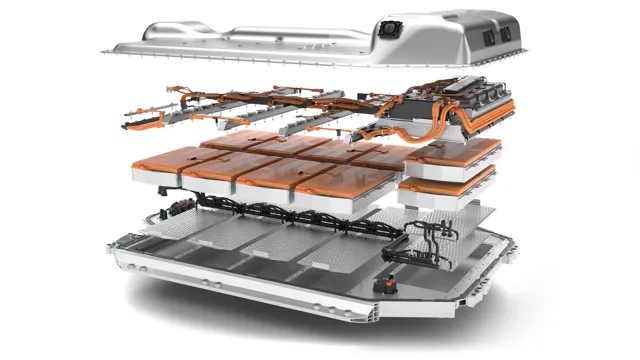The Inconvenient Truth: How Child Labour Powers Your Smartphone and Electric Car Batteries
Do you ever stop to think about where your batteries come from? You might be surprised to learn that the production of batteries can come at a great cost, particularly when it comes to child labor. It’s a harrowing reality, but children as young as six years old are working in battery production factories around the world, often for 12 hours a day in dangerous conditions. The demand for batteries has skyrocketed in recent years, and unfortunately, this has only led to an increase in exploitation of vulnerable children.
In this blog post, we’ll take a closer look at the child labor woes in battery production, exploring the problem and what can be done to combat it.
Statistics on Child Labour in the Industry
According to statistics, child labour is unfortunately prevalent in the industry behind smartphone and electric car batteries. It’s estimated that there are over 40,000 children working in mines in the Democratic Republic of Congo alone, where cobalt is mined for use in batteries. Many of these children work long hours in dangerous conditions for little to no pay, which is a clear violation of their basic human rights.
Additionally, children are also involved in the manufacturing of electronic devices in other countries, such as China and India. It’s important for consumers to be aware of the prevalence of child labour in the supply chains of these industries and to demand more ethical sourcing practices from manufacturers. By taking action, we can help put an end to this harmful and exploitative practice.
Increasing Reports of Child Exploitation
Child exploitation is a growing concern as reports continue to surface regarding the prevalence of child labor in various industries. According to recent statistics, an estimated 152 million children are involved in child labor globally, with the majority being exploited in the agriculture and mining sectors. In the garment industry alone, there are approximately 260 million child laborers.
These children are often forced to work long hours in hazardous conditions, with little or no pay, and are subjected to physical and emotional abuse. Child labor not only deprives children of their basic rights, but it also has long-term effects on their physical, intellectual, and emotional development. To combat this issue, it is crucial for governments, businesses, and individuals to take a stand against child exploitation and to advocate for safe and fair working conditions for all.
Countries with the Highest Incidents of Child Labour
Child labour remains a significant issue in numerous countries around the world and is especially prevalent in the industry sector. In fact, there are an estimated 152 million children, aged between 5 and 17, who are currently working in such industries as mining, farming, and manufacturing. Sadly, these children are being forced to work in hazardous conditions and are being denied the right to an education or a childhood.
Statistics have shown that some of the countries with the highest incidence of child labour include India, Pakistan, and Bangladesh. Although efforts are being made to combat this issue, it remains a persistent problem that requires continued attention and action. We must all make a concerted effort to protect the rights of children and end the exploitation of their labour.
The Impact on Children and Communities
The use of child labour in the production of materials used in smartphones and electric car batteries has a devastating impact on children and communities. Many of these children come from impoverished families and are forced to work in hazardous conditions for little pay. Not only are they deprived of a proper education, but they suffer from health problems and are at risk of injury and even death.
This practice also contributes to the cycle of poverty, as it deprives children of the chance to break free from their circumstances. Additionally, the use of child labour damages the reputation of companies and countries involved, and consumers must push for more ethical practices in the production of technology. By doing so, we can protect the rights and wellbeing of children while also promoting sustainable and responsible production methods.
Horrendous Working Conditions for Children
The horrendous working conditions that many children face have a devastating impact on both the children themselves and their communities. When children are forced to work in dangerous and exploitive jobs, they often suffer physically, mentally, and emotionally. They may be exposed to hazardous materials, work long hours with no breaks, and be subjected to physical and verbal abuse.
Additionally, child labor often leads to limited educational opportunities, as children are unable to attend school while working. This not only impacts the child’s future potential, but also the economic growth and development of their community. By employing children rather than investing in their education and well-being, communities are trapped in a cycle of poverty and limited opportunities.
It’s crucial that we prioritize ending child labor and ensuring children have access to safe and fulfilling childhoods.
Consequences on Education and Health
The COVID-19 pandemic has had a significant impact on the education and health of children and communities worldwide. With schools closed and remote learning becoming the norm, children have faced disruptions in their education that could have long-term consequences. Many schools lacked the resources and infrastructure to ensure that every student had access to remote learning, leading to a widening education gap between those with access to technology and those without.
Additionally, the pandemic has created significant mental health concerns for both children and their families. Social isolation, financial stress, and uncertainty about the future have taken a toll on the mental health of many. It’s important that we prioritize the mental health needs of our communities and develop strategies to mitigate the long-term effects of the pandemic.
The COVID-19 pandemic has highlighted the need for accessible and equitable education and healthcare systems. As we move forward, we must work to ensure that all children have equal access to education, regardless of their socioeconomic status, and prioritize mental health resources for all members of our communities.
Negative Impact on Local Economies
The negative impact of big corporations on local economies is felt most by children and communities. When large corporations move into a town or city, they often bring with them a host of challenges that can negatively affect the economic well-being of the local community. For one, these corporations often hire workers from outside the area, which can take jobs away from residents who are struggling to make ends meet.
This can lead to higher unemployment and lower wages, placing additional financial strain on families and children. Additionally, these corporations often divert resources away from local businesses, which can leave smaller, locally-owned stores struggling to compete. The end result is a weakened local economy that is not able to support the needs of its residents.
And while the impact of big corporations on communities is a complex issue, it is clear that more needs to be done to ensure that local economies can thrive and grow without being undermined by outside forces.
What Can Be Done to End Child Labour in Battery Production?
The issue of child labour behind smartphone and electric car batteries is a complex and distressing one. The first step to ending this practice is for companies and governments to take responsibility and ensure that strict laws are in place to prevent it. Consumers can also do their part by choosing to buy products that are certified as child-labor-free and supporting companies that have ethical business practices.
However, simply boycotting products made with child labor may not be enough to address the root causes of the problem. Poverty, lack of access to education, and cultural norms all contribute to the widespread use of child labor in the battery production industry. Therefore, addressing these broader issues requires a long-term, multi-layered approach that involves education, social programs, and investment in sustainable development.
It is everyone’s responsibility to work towards a world where child labour is no longer a reality. By staying informed and taking action, we can help put an end to this unacceptable practice.
Raising Awareness and Putting Pressure on Brands
Child Labour in Battery Production Many brands that consumers buy from have been linked to child labour in battery production. It is a harsh reality that children are being forced to work in dangerous conditions to manufacture the batteries we use every day. As consumers, we have the power to hold these brands accountable and put pressure on them to end child labour in their supply chains.
One way we can do this is by raising awareness about the issue and encouraging others to boycott the brands that use child labour. Another way is to write to the brands directly, letting them know that we will not support companies that engage in such practices. By taking a stand and speaking out against this injustice, we can make a difference and help put an end to child labour in battery production.
Empowering Local Communities and Providing Alternatives to Child Labour
Child labour is a complex issue that requires multifaceted solutions. One way to end child labour in battery production is to empower local communities and provide alternative income opportunities. The communities where battery production takes place often lack access to education, healthcare, and basic infrastructure, making it difficult for families to break the cycle of poverty.
By investing in these communities, we can provide vocational training, education, and job opportunities that empower individuals to support themselves and their families. Additionally, we can work with local businesses to create sustainable economic opportunities that benefit both the community and the environment. By providing alternatives to battery production and encouraging ethical labour practices, we can reduce the demand for child labour and create a brighter future for all.
Let us work together to end child labour and promote fair and sustainable business practices.
The Responsibility of Consumers and Industry Players
As consumers, we hold significant responsibility in preventing child labour behind smartphone and electric car batteries. The demand for these products has grown over the years, leading to an increased need for cobalt. Unfortunately, a significant portion of this mineral comes from mines in the Democratic Republic of Congo, where child labour is prevalent.
As consumers, we must take the time to research the products we buy and ensure they are ethically sourced. We also have the power to choose companies that prioritize ethical practices in their supply chain. On the other hand, industry players must take responsibility for their supply chain.
Large corporations must ensure that they are sourcing minerals and metals responsibly and not supporting child labour. As more people become aware of the issue, we must work together as a society to protect the vulnerable children who are being exploited.
Conclusion
In today’s society, it’s easy to get caught up in the hype of the latest technology. But it’s important to remember the harsh reality behind the smartphone and electric car batteries we all rely on. Child labour is still a major issue in many parts of the world and unfortunately, the demand for these products only perpetuates the problem.
So next time you pick up your phone, take a moment to reflect on the true cost of our technological advancements and what we can do to create a more equitable world. Remember, being an informed consumer is the first step towards creating meaningful change.”
FAQs
What is child labour in the context of smartphone and electric car batteries?
Child labour refers to the use of underage children in mining or manufacturing of minerals and materials used in production of smartphones and electric car batteries.
Which countries have been reported to use child labour in the production of such minerals and materials?
Countries such as the Democratic Republic of Congo, Bolivia, and Peru have been reported to have child labour involved in the mining of cobalt, lithium, and other minerals.
What measures have been taken by companies to prevent the use of child labour in their supply chain?
Some companies have committed to responsible sourcing of minerals and materials, ensuring transparency in their supply chain, and conducting audits and inspections. They have also established initiatives to support the education and well-being of children in mining areas.
How can consumers be sure that their smartphones and electric cars are not produced using child labour?
Consumers can look for certifications or labels such as the Responsible Minerals Initiative or the Responsible Cobalt Initiative, which indicate that the product was made using responsible sourcing practices. They can also research and support companies that have taken steps to address the issue of child labour in their supply chain.





